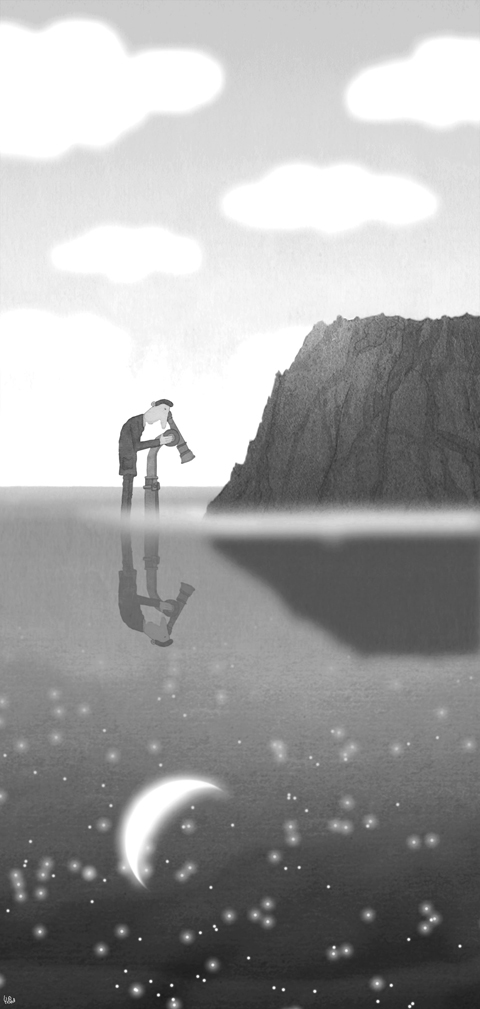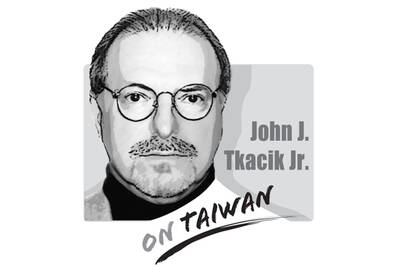Like most young men, Henry Walter Bates sought adventure. Unlike most, he was also obsessed with beetles. So in 1848, at age 23, he set sail from Liverpool on the trading ship Mischief, bound for Brazil. During 11 years in “savage solitudes,” the naturalist fell ill with malaria, yellow fever and dysentery; he was horribly lonely but, despite physical pain and mental anguish, he kept on collecting rainforest species never before seen by European eyes. When he left South America, never to return, he shipped to the Natural History Museum in London more than 8,000 different species — mostly insects — that were previously unknown to science.
The Victorians’ wonder at the miracles of nature, and their hunger to conquer foreign lands, has long made species hunting seem an anachronistic endeavor. Theirs was an age of never-to-be-repeated mapping of the world’s plants and animals, a time of The Origin of Species and the feting of explorer-scientists such as Bates, Alfred Russel Wallace and Charles Darwin.
The discovery and naming of things has never quite captured the public imagination in the same way since.

Yet now, barely a week passes without the breathless announcement of a dramatic new find, from the Sundaland clouded leopard — a species of big cat filmed for the first time in Borneo — to a flesh-eating pitcher plant so large it can devour rats, which was found by a young British species hunter during an expedition to the Philippines.
Suddenly, species hunters and taxonomists can hardly go to work without being followed by a camera crew. Following on from the success of last year’s Lost Land of the Volcano, about species hunters in Papua New Guinea, comes a new BBC series, Museum of Life. Filmed over 18 months, Jimmy Doherty, of Jimmy’s Farm fame, examines the pioneering work of some of the 300 scientists tending to, and augmenting, the Natural History Museum’s collection of 70 million animals, plants, fossils and minerals.
We are, it seems, experiencing “a second wave of exploration that almost matches the Victorians,” says George McGavin, an academic who headed up the Lost Land of the Volcano expedition.
So what is driving this? Even now, the vast majority of life on Earth is still undocumented by science. Scientists estimate there are between 8 million and 10 million species but, from bacteria to blue whales, we have so far only “described” — ie, classified — a million-and-a-half of them. At best, we have named one in six of every type of living thing. Last summer, a mysterious new insect was even found in the Natural History Museum gardens in London. Species hunting scientists are desperate to document the diversity of the world before we destroy it.
Going behind the scenes at the Natural History Museum is a rare treat; this is a working museum as magical as anything in fiction. Dust motes sail across crepuscular alcoves, where curators hunch over miniscule specimens on a gloomy mezzanine floor that looks unchanged from Bates’ day. The smell of naphthalene — mothballs — is overpowering. Maxwell Barclay, head curator of coleoptera and hemiptera (or, beetles) has traveled to Bolivia, Thailand, Taiwan and Peru. Unlike Bates, he collects intensively for just three weeks. Transporting finds is not a problem: Thousands of beetles will pack into a small suitcase.
Barclay picks up a test tube, swimming with a sinister tangle of dead beetles.
“That’s what we call insect stew,” he says.
Specimens are brought to the museum like this, pickled in alcohol, dried, labeled, pinned inside old mahogany drawers and, finally, identified — possibly adding to the 400,000 beetles already described.
Barclay grabs a tray of dung beetles collected from Kruger National Park in South Africa. They have shiny shells of iridescent green and dark maroon, and are still being sorted into species and groups. He points to another, different insect, a reddish brown blob that could perch on the head of a drawing pin. He knows it is a type of leafhopper “that just happened to fly into one of the dung beetle traps,” but suspects it “is unknown to science.”
The world of the species hunter is endearingly low-tech. In 1848, Bates slung a shotgun over one shoulder and bags for the birds he was collecting over the other. Today’s species hunters don’t carry guns, but Alex Monro, a botanist at the museum, still wraps his specimens in bundles of newspaper and soaks them in alcohol before putting them in plastic bags.
“It’s very retro. We regularly use mules to transport them,” says Monro, who has been species hunting in La Amistad — a steep, inaccessible world-heritage site spanning Costa Rica and Panama.
In Bolivia, Barclay caught beetles by hanging a sheet behind a UV lamp, laying another on the ground, and sitting through the night, picking fallen bugs from the sheet one by one. In this way, 25,000 specimens were collected in three-and-a-half weeks — from which, so far, they have found 25 new species.
“The work is physically quite hard, the conditions are uncomfortable and the walking is a real killer, so you have to be motivated — but I’m not an obsessive,” says Monro, an expert in the nettle family of flowering plants.
“The buzz that I’m addicted to is being somewhere where you see and collect things for the first time ever — that’s a tremendous sense of discovery,” he says.
But aren’t species hunters also motivated by the desire to be the first to give new species a scientific name? Doesn’t rivalry drive them on?
“For some people, yes,” Barclay says. “There are rogue taxonomists, just like there are rogues in every field. But most seriously believe we have a duty to understand the diversity of the planet.”
Another species hunter reveals he was dismayed to receive a paper to peer-review that described a species he had also found, but had not yet got around to describing — the equivalent of a journalist being scooped on a story.
“The fastest is the best — it’s like Darwin, the strongest will survive,” says the museum’s butterfly curator, Blanca Huertas, of the rush to get species described.
This can take a while: collectors need to gather more than one specimen to properly describe a species because individuals may simply be freak mutations, and there is always the risk of describing an already recognized species.
Why does it matter whether we know about an obscure beetle living in Papua New Guinea? In part, it’s because we need fungi and bacteria for all our antibiotics, while thousands more useful chemicals and remedies lie undiscovered in nature — although species hunters at the Natural History Museum do not get involved in this “bio-prospecting,” Monro says. The scientists find, classify and describe; it is up to governments what use their discoveries are put to.
But the authorities are often suspicious, says Barclay, and do not always understand that scientists are not seeking to get rich by finding magic cures, but simply documenting biodiversity, the most valuable thing of all. Beetles are often crucial cogs in ecosystems, while even butterflies have a function.
“Butterflies are biological indicators,” Huertas says. “They are great indicators of the quality of the environment. In the UK, butterflies are one of the best-studied groups, and so can help us understand why the climate is changing because the populations are moving and changing.”
“To me,” Barclay says, “just knowing there are thousands of organisms being destroyed and not attempting to document them is ridiculous. Understanding what makes the universe tick is part of our stewardship of the planet.”
Discoveries beget discoveries: “Charles Darwin was interested in collecting beetles because he thought beetles were pretty. Being wealthy, he funds a trip to collect a bunch of stuff, goes home, thinks about it, and comes up with a theory that changes human existence. Just because he likes beetles. If you choose to live in complete ignorance of the world around us, we’re not going to make these discoveries,” Barclay says.
McGavin, though, fears the current fascination with finding new species masks the damage we are doing to the planet’s biodiversity.
“Although it’s a second wave of exploration that almost matches the Victorians, this could well be a short-lived renaissance. The bad side to this [species hunting] is that it gives the impression that everything is fine. The real story is habitat loss. In 50 years’ time, this [exploration] won’t happen anymore,” he says.
Controversially, McGavin argues it is not necessary to identify all the species of the world.
“We probably don’t need to describe everything, and the chances of us doing that are virtually nil because it is being lost at such an alarming rate,” he says.
He says that to save the biodiversity of the planet, we must protect hotspots such as the rainforests in Papua New Guinea and the Amazon, where most species reside.
“The absolute priority is to preserve habitat — particularly tropical rainforests — because that, apart from the oceans, is where we know most species live,” McGavin says.
“If we don’t, by 2050 and perhaps even earlier, we’re going to lose at least half the species on Earth — an extinction event which is almost unbelievably fast, dwarfs anything that happened in the past, and is entirely due to us,” he says.
You wish every Taiwanese spoke English like I do. I was not born an anglophone, yet I am paid to write and speak in English. It is my working language and my primary idiom in private. I am more than bilingual: I think in English; it is my language now. Can you guess how many native English speakers I had as teachers in my entire life? Zero. I only lived in an English-speaking country, Australia, in my 30s, and it was because I was already fluent that I was able to live and pursue a career. English became my main language during adulthood

Somehow, US intelligence identified “the Houthis’ top missile guy” and pinpointed his exact location. At 1348 hours (Washington time), March 15, President Trump’s national security advisor Mike Waltz texted, “positive ID of him walking into his girlfriend’s building.” The unsuspecting Romeo entered. High above, the drone monitoring the building registered a flash. When the smoke cleared, Mr. Waltz texted, “…And it’s now collapsed.” RIP. The star-crossed “top missile guy” had been target number one in the now uproarious US Navy bombing campaign on that Sunday against the Yemeni rebels who have been holding the Red Sea hostage since October 19,
Taiwan on Monday celebrated Freedom of Speech Day. The commemoration is not an international day, and was first established in Tainan by President William Lai (賴清德) in 2012, when he was mayor of that city. The day was elevated to a national holiday in 2016 by then-president Tsai Ing-wen (蔡英文). Lai chose April 7, because it marks the anniversary of the death of democracy advocate Deng Nan-jung (鄭南榕), who started Freedom Era Weekly to promote freedom of expression. Thirty-six years ago, a warrant for Deng’s arrest had been issued after he refused to appear in court to answer charges of
The Opinion page has published several articles and editorials over the past few weeks addressing Taiwan’s efforts to leverage unique or strong aspects of its culture to increase international awareness of the nation. These have included submissions by foreign journalists and overseas students, highlighting how bubble milk tea, Guinness World Record attempts, the entertainment sectors, impressive scenery, world-class cuisine and important contributions to the high-tech supply chain can enhance Taiwan’s recognition overseas and therefore its soft power. That entails competing for attention in already crowded sectors. Other nations, after all, offer popular entertainment exports, beautiful scenic spots and great food.